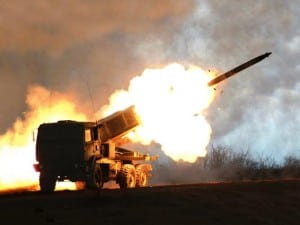
The Army plans to seek congressional approval to award multi-year procurement contracts for GMLRS rockets and Patriot Advanced Capability (PAC)-3 missiles in fiscal year 2024, officials confirmed this week. Army Secretary Christine Wormuth and Doug Bush, the service’s top acquisition official, both cited cost savings and industrial base stability as key factors associated with pursuing multi-year deals for the two Lockheed Martin [LMT]-built munitions. “We are looking in FY ‘24 to work with Congress to be able to get multi-year…

 By
By 











